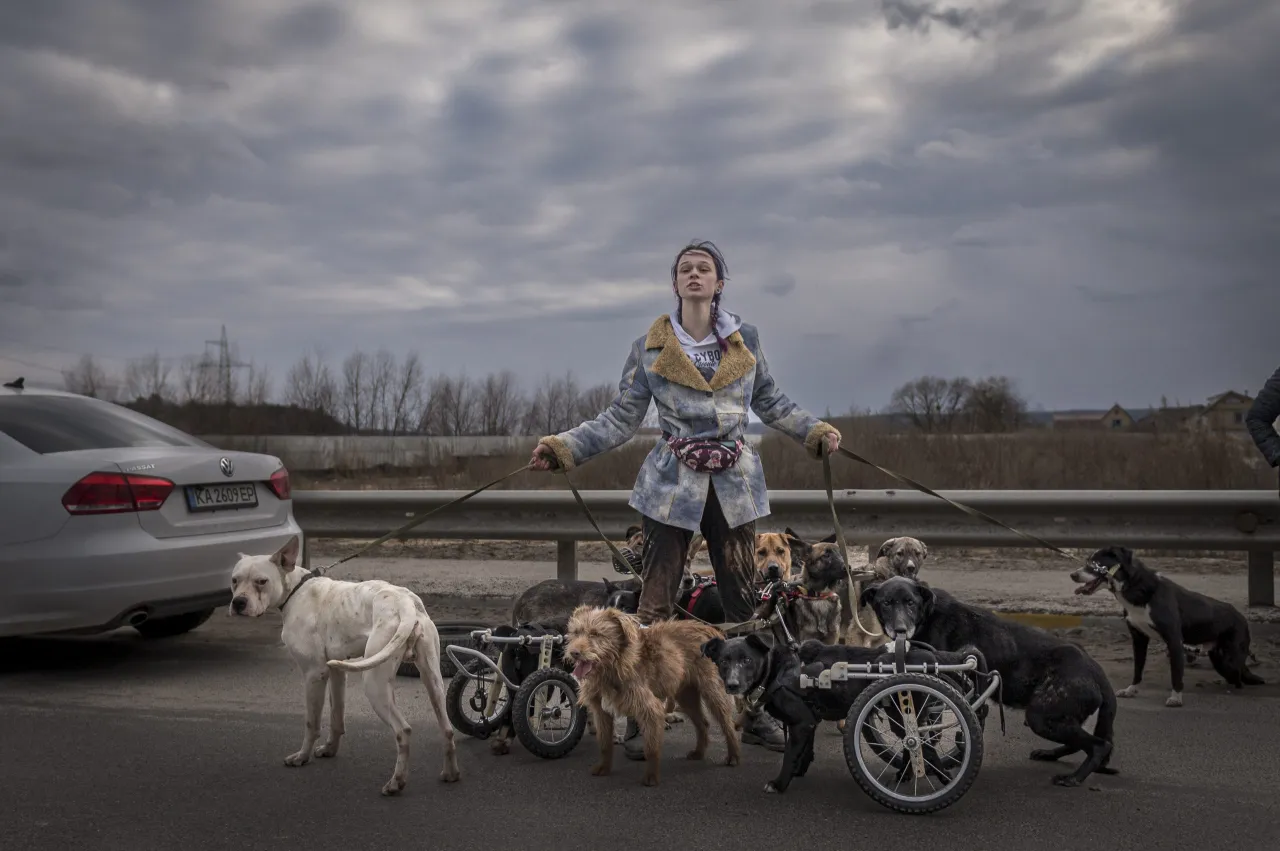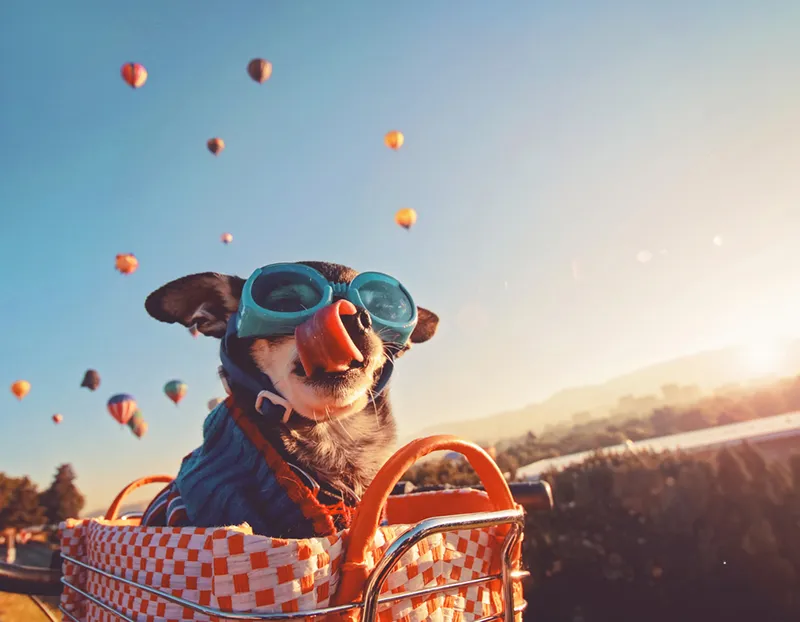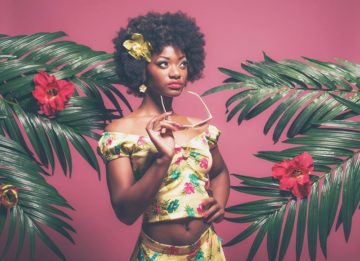Covering The War: Interview With Photojournalist Christopher Occhicone
Since February 24, Ukraine has been the center of attention for people from all over the world. Many of them continuously follow all the news related to both heartbreaking and inspiring events of the Russia-Ukraine war. It’s impossible to overestimate the role of journalists and photographers who share stories from the frontline or occupied territories, often risking their lives.
To shed light on the work of photojournalists during the Russian invasion, we talked to Christopher Occhicone, who has been living in Ukraine since 2014. His photos have appeared in Time, The New York Times, The Wall Street Journal, The Washington Post, ABC News, Burn Magazine, and other world-known media. Continue reading to find out about the visual diary of war, specifics of working with Ukrainians, and the most impressive human stories Christopher has witnessed.
Why did you choose to come to Ukraine and stay here?
My grandfather was in WWII and died a couple of years ago. He was telling me stories to the day he died, and those blood stories — characters he met from all over the United States — that was something I was carrying with me. So when the war started in Ukraine, I was reading about battalion Donbas and people from different parts of the country, different walks of life, all volunteers — this is the opportunity that I was looking for to have some understanding of what my grandfather experienced.
I came to Ukraine in 2014 and made good pictures, but there was no cohesive story. It was confusing and overwhelming. However, I met a Ukrainian guy, a cameraman from the Right sector (Ukrainian Volunteer Corps, a paramilitary group created and controlled by the Ukrainian nationalist party Right Sector). We became friends, and this friendship opened a whole world for me.
![]()
Ukrainian soldiers from the 2nd Battalion DUK fire a mortar at a Russian position on the front line in the Bakhmut area. June 4, 2022
How do you find it to be a foreign photojournalist in Ukraine?
Going to the frontline is probably the scariest thing I’ve ever done. I have a series of portraits that I’ve shot in the frontline over the years. It always has to be from a zero position — at a point of contact. My recent shot of Zelensky is like that. We were in a basement in the presidential complex, surrounded by sandbags and guys with guns. All these rockets, shot down and hitting buildings, are being aimed at him. So I think it counts for my series. A lot of my friends say, “We are in Luhansk, maybe you should come here and take photographs of us”. That’s something I think too — to move around and document the war.
The Kyiv Post made a deal with me and an excellent Spanish photographer to make an ongoing visual diary of the war. We travel and find what is interesting for us. I have been working with Wall Street Journal for five or six weeks since February 24th. It was an amazing opportunity, but it was limited in some ways. They have to put together teams of a writer, photographer, translator, fixer, and a security guy. The security guys are British. They have never been in Ukraine before, they don’t speak the language, and their job is to keep us safe. Also, they were rotating the teams every 7 to 10 days. By the time they figure out what is going on — they need to go. To develop a story — low chance.
![]()
Civilians evacuate on foot from Irpin. March 7, 2022
I know the history of Ukraine, but I don’t feel it in my blood. So when Ukrainian people talk about how Russians have always been trying to kill them, I understand that it’s the case — they tried to starve you to death, they occupied you. My best friend always says, “They’re coming, they want genocide. They tried it before — it didn’t work, tried it then — it didn’t work”. I thought I understood. But I don’t understand how this can happen in 2022. Are they going to roll tanks in this country? I never thought that would happen. And that’s the only thing that changed.
Now, I think Russians are capable of anything. I would even believe in a small nuclear strike. They have no bottom, no soul, no character, no pride. You see what Russians aspire to — handcuffing people and shooting them in the head. I’ve seen it. I always thought of them as street punks — if there is weakness, they’ll come and exploit it. I’m just stunned by the level of cruelty they are capable of.
Why did you decide to learn Ukrainian?
I simply wanted to go to the store and get coffee, make friends, anything. I took some lessons. I can tell you some jokes, get around, survive. I can talk to people and understand their stories about planes coming and bombing their homes. However, I’m not having philosophical discussions.
![]()
A man wounded by a downed Russian rocket is treated by doctors in the Kyiv hospital. March 18, 2022
How easy is it for you to communicate with Ukrainians during your work?
There are a couple of kinds of people. Some hard people say, “Don’t”. But usually, you can break them down. For example, I had to film in the market in Mariupol, which was bombed in 2015. People, especially older ones with a more Soviet mentality, were freaked out by the journalists. It can be tough. But there is always this woman who’s like, “No, I’m not pretty anymore”. And I go, “What are you talking about? I see you looking good in this sweater”.
In Chernihiv and other places like this where houses were destroyed, people are returning, taking their things. You’re asking for permission to film while they are cleaning, and they are ignoring you. Other people want to tell you every detail. Some people want to tell the story so badly that it’s hard to take candid photos because they’re looking at you the whole time.
People in the village might think you’re somebody important. After February 24th, all the big guys came, but for the last few years, not many big journalists have been doing substantial work here. People are interested in you because you really care, and you don’t get paid for being here. I’m talking to you in the photograph because I wanted to help you in some way. Everyone is doing what they can. Someone raises money, someone repairs cars, and someone comes with guns. Everyone has some skill that they can contribute to. Of course, I am supposed to say that I’m a neutral journalist, but that’s bullshit. Nobody is neutral.
![]()
A soldier from the 2nd Battalion DUK sits for a portrait near Bakhmut. June 8, 2022
Is it emotionally hard for you to film all these stories?
These last things — especially. Working with orphans and children with disabilities was very hard, and I didn’t want to look at the pictures. I would photograph and not edit them for months. I told this story a few times. We were in Avdiivka, and it was a week or so before we left. It was stressful and very scary — a lot of shelling, buildings vibrating, and top floors destroyed. I guess we were safe enough, but it was scary. There was a point where I wished I could just snap my fingers and go home, click my heels like Dorothy from The Wizard of Oz. But you understand that’s not happening: either these guys need to win, or we will be prisoners.
I made pictures that I’m proud of, and these are some of my favorite works. We went to an orphanage, and the kids were in such bad shape that my hands were shaking. Even shooting at 250/sec the pictures were blurry. It was very upsetting. I didn’t understand all the details, and I just took the director’s words that they are incurable. I printed the pictures of the kids and put them next to my bed to remind me that I have to work on this and keep going forward with this. Otherwise, it’s easy to push it out of your head.
![]()
A building burns after being hit by a russian rocket in Brovary on the first day of the full-scale invasion. February 24, 2022
The last weeks of evacuation from Irpin were tough. Seeing Bucha and Borodyanka was tough. Usually, I worked with other photographers from Poland and Spain. We had someone to talk to, deflect things with dark humor, or even talk about something completely different, change the subject. But there were times, especially when going to Irpin, that didn’t feel real. For instance, during the same day we helped carry out an American photographer who got shot. And then, a little while later, my friends and I were having a Negroni and watching Manchester United in my apartment. And then you look at the pictures, edit them, color correct them, and you’re just like, “What did I just see? How am I sitting in my apartment?”. It’s weird. When you’re alone with the pictures, it becomes real. It’s so cliche to think that the camera is a kind of a shield. Because even while shelling in Irpin, they were shooting at the bridge and under it. You’re taking pictures and don’t even think about it, even though it’s 100 meters over there. No, they’re shooting at you, they just didn’t hit you by the grace of God.
Even the days you are not shooting, you’re trying, navigating — it’s stressful. Eventually, you get tired. Like when I went to Chernihiv with my fellow guy, we got there in the afternoon, somebody found us a place to stay, and we knew that we had to come to a few neighborhoods tomorrow. In the morning, the window is broken, it’s freezing, it’s raining, the weather is bad, and I don’t want to go outside because everything will look the same — more destruction, more horror. I don’t even want to look at this anymore. And of course, you go out, and as soon as you meet a person with a good attitude, you’re back on track, and you do your work.
![]()
A soldier of the Azov Regiment undergoes rehabilitation in Kyiv. July 13, 2022
What do you think military photography should look like?
First of all, I’m tired of seeing pictures of our soul soldiers being nice to dogs and cats. I get it: you’re the good guys. And I like dogs and cats. But how many photos like this do we need? I have a few as well. And it also happened in 2014, like “soldier marries a volunteer”. That’s great. I would love to photograph one of those weddings. But filming guys shooting, hiding — your government doesn’t make it easy. Photographing military hospitals is prohibited: they don’t want to show injured soldiers. And I think that’s a mistake.
I think you have to show the reality of things to reflect what Russians are doing with the best of the generation — these brave guys fighting for their country. And then the humanity of these guys — fear, humor, just how it is. I’ve been to a place on the frontline where guys built the position like paradise, always working to make things look better. All of this stuff is interesting. They’re hanging around, joking, laughing, they’re just guys doing what guys do. And, of course, pictures of guys shooting artillery, smoke going up, covering their faces — it’s cinematic, and you want to capture this. The actual “bang bang” photography is not that interesting. That’s why the thing with dogs and cats is easy. We’ve been working with this Polish photographer, who also works with animal rescue. They’re taking stray dogs and sending them to Poland. So he’s trying to catch this dog, and one of the guys asks, “Hey man, why is your friend trying to steal my dog?”. There’s a lot of humor there.
Photographing funerals — I hate doing that, but I appreciate doing it at the same time, because it’s important to show somebody’s mother, daughter, wife, or son, and other soldiers mourning over a guy. It is the reality of war. Of course, it’s exciting to be in actual combat, playing with fire, but that is not the most exciting thing to look at. Even when you’re filming the guy who is shooting the gun, turn around and take pictures of those who are watching him shoot — it’s more interesting.
What’s the story behind the photo of Nastya rescuing dogs from Irpin?
I’m an animal guy. I always liked stray dogs. So I love what Nastya is doing. I saw her coming from far away. I was in my car driving in Irpin, and I had to stop and take this picture. Everyone liked the photo with Nastya. I gave it to the Ukrainian government for the #BRAVEUKRAINE campaign. It’s all over the world, it’s crazy.
![]()
Nastia Tykha evacuates disabled dogs during the battle for Irpin. March 9, 2022
Were there other stories that impressed you the most?
There was the story of a guy from Bucha which bothered me a lot. It looked like he was shot in the mouth. The man was wearing a uniform from a mechanic repair shop. And the smell — a little bit of gasoline, a little bit of oil — is a certain smell that is very familiar to me, as my father is a mechanic. This guy was my father’s age, and he was working. This part touched me the most. I thought my father definitely would have been working, even if the foreign troops were in the city. I could imagine guys walking in and my dad telling them to go away because it was his place. They just shot that guy. It’s not cinematic, not like the movies. They probably left laughing and searched his pockets for cigarettes.
Are you familiar with the work of your Ukrainian colleagues?
Alexander Chekmenev’s work is pretty stunning. Alexey Furman was shooting a lot at the beginning of war (2014–2015), and he did an amazing job. Alexey Furman and Sergey Polezhaka are like best friends. They did interesting things together, like a VR project about Maidan (Maidan Revolution, also known as The Revolution of Dignity, that took place in Ukraine in February 2014). They did many exciting charity activities with NGOs in Donbas too. Many guys are doing interesting stuff. But if we talk about photography, I would say Alexey Furman is the best. An extremely talented, poetic way of talking about things. And, of course, Mstislav Chernov and Yevhen Maloletka. They are fantastic.









